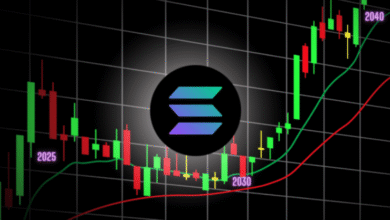
Forex Trading Strategies: Understanding the Basics and Beyond
The world of foreign exchange, popularly known as Forex, is colossal, with an average daily trading volume surpassing $6 trillion. Forex trading offers a plethora of opportunities for both novices and experienced traders, but success often hinges on one’s knowledge and strategy. A significant component of this knowledge is understanding various ‘forex trading strategies‘. This article seeks to elucidate the basics of these strategies and offer insights into their application.
What is Forex Trading?
Forex trading refers to the exchange of one currency for another. With forex, trading isn’t centralized on an exchange like stock trading. Instead, it is carried out electronically in an over-the-counter (OTC) market. This means transactions happen directly between two parties, often facilitated by brokers.
Why is a Trading Strategy Essential?
A forex trading strategy is a systematic method used by traders to determine whether to buy or sell a currency pair at a given time. Strategies can be based on technical analysis, fundamental analysis, or a combination of both.
- Objective Decision Making: With a clear strategy, decisions are less influenced by emotions, leading to a more consistent trading approach.
- Performance Metrics: Having a strategy enables traders to track their performance, refine techniques, and improve their returns.
- Risk Management: Effective strategies encompass risk management protocols, ensuring traders don’t risk more than they can afford to lose.
Popular Forex Trading Strategies
While there are countless strategies out there, a few have gained notable popularity due to their efficiency and adaptability:
- Trend Trading: This strategy involves analyzing and following market trends. Traders using this strategy will identify the direction of the market (either uptrend or downtrend) and then make trades that capitalize on that movement.
- Scalping: A strategy for the impatient, scalping involves making very short-term trades to gain small profits frequently. It’s imperative to have a clear exit strategy as losses can also occur rapidly.
- Breakout Trading: This strategy hinges on the market moving outside of a defined range (either above resistance or below support). When the price breaks out, it typically continues in the breakout direction, giving traders an opportunity to capitalize.
- Position Trading: Based on longer-term chart analysis and more so on fundamental factors, position traders hold onto trades for longer durations, ranging from days to months.
- Swing Trading: Traders using this strategy capture ‘swings’ in the market. They enter trades when they believe the market momentum will swing in a particular direction.
Factors to Consider When Choosing a Strategy
- Time Commitment: Some strategies, like scalping, require a significant time commitment, while others, like position trading, are more hands-off.
- Risk Tolerance: Evaluate how much risk you’re willing to take. Strategies that involve short-term trades often come with higher risks.
- Capital: Some strategies might require more capital due to wider stop-loss points or the necessity for diversification.
- Market Analysis Skills: Your familiarity with technical or fundamental analysis can influence the best strategy for you.
Conclusion
Forex trading, while offering lucrative opportunities, is not devoid of risks. Mastery of forex trading strategies is pivotal to navigating these volatile waters. Whether you’re gravitating towards trend trading or trying your hand at scalping, remember that continuous learning, practice, and adaptation to market changes are the keystones to success.
Incorporate ‘forex trading strategies’ into your trading regimen, stay informed, and refine your methods as you gather experience. With the right strategy and mindset, the vast realm of forex trading can be both rewarding and intellectually fulfilling.




